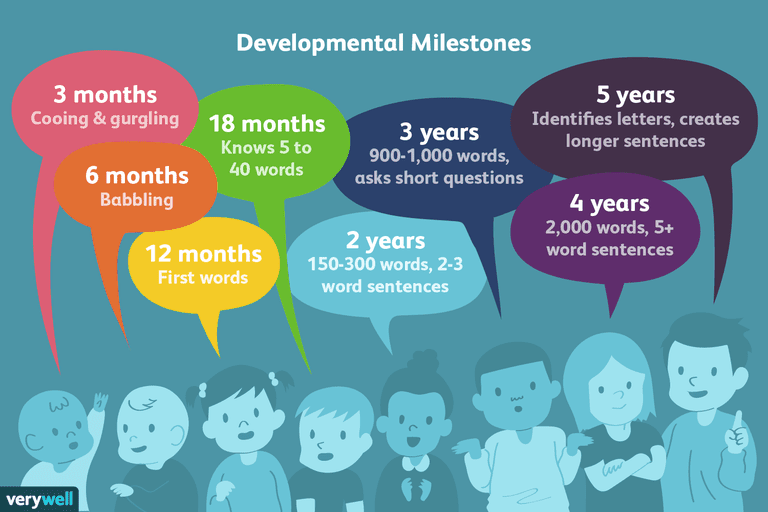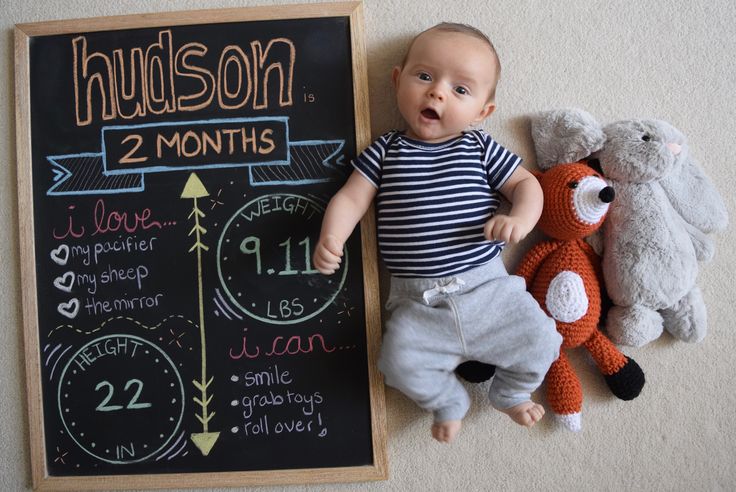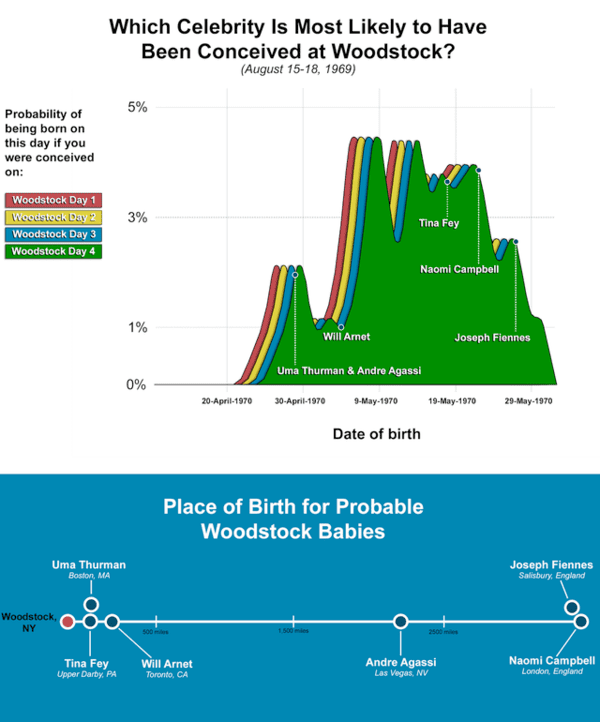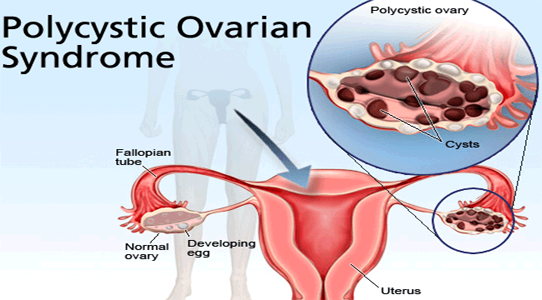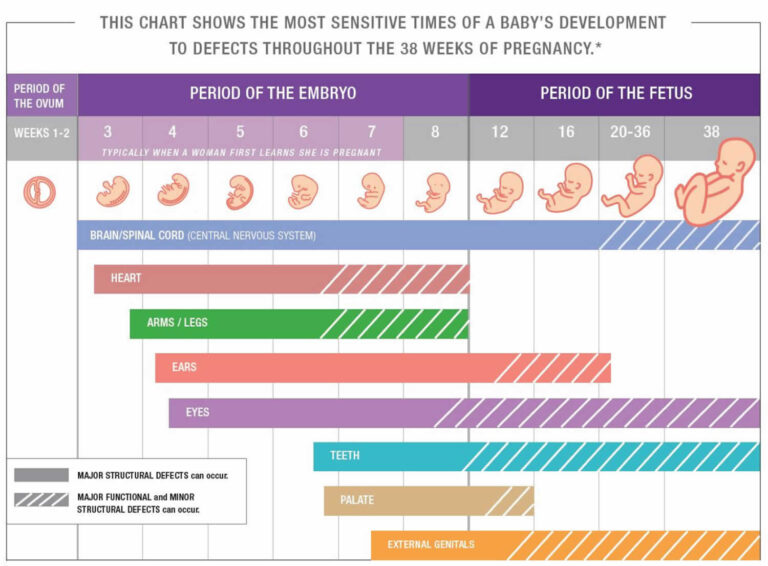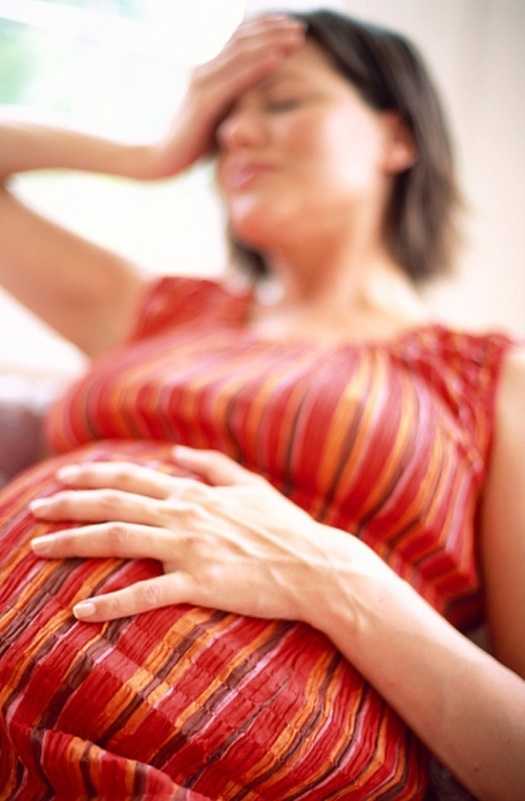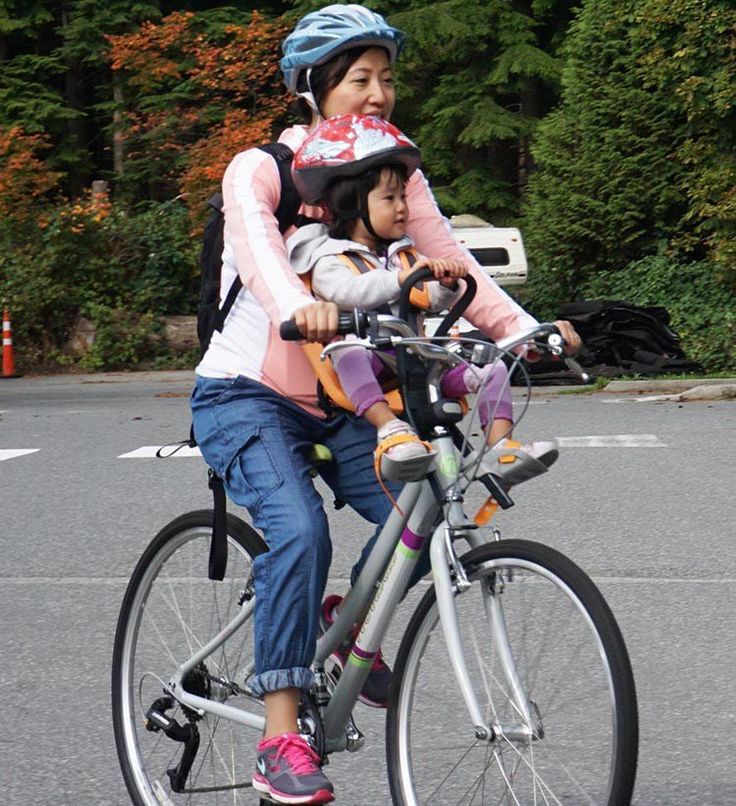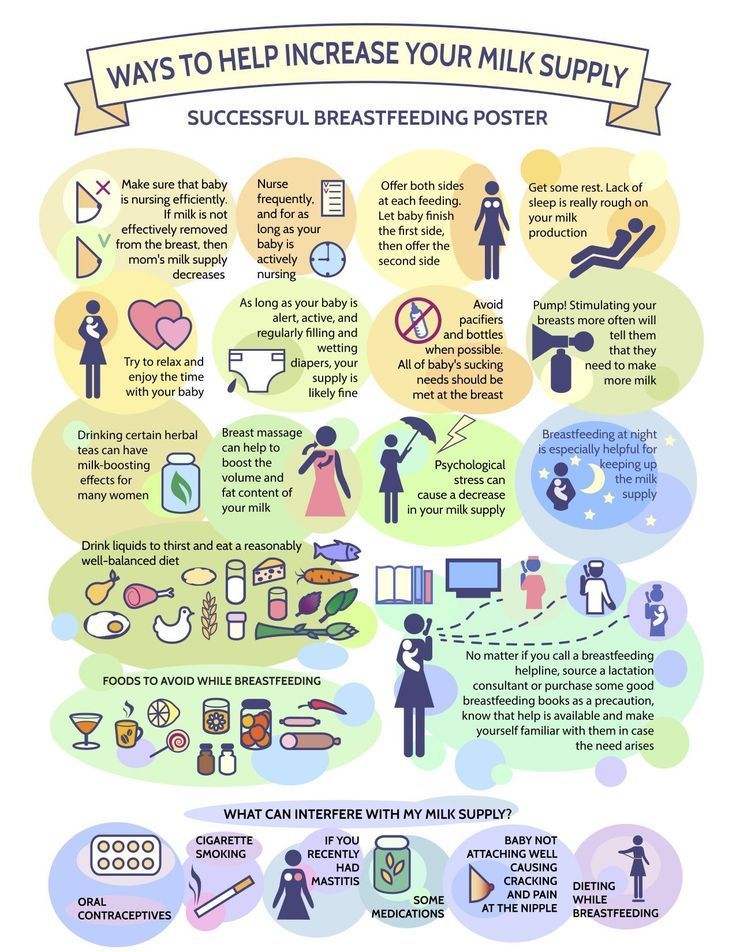Baby development process
Fetal development: Month-By-Month Stages of Pregnancy
When does a pregnancy start?
The start of pregnancy is actually the first day of your last menstrual period. This is called the gestational age, or menstrual age. It’s about two weeks ahead of when conception actually occurs. Though it may seem strange, the date of the first day of your last period will be an important date when determining your due date. Your healthcare provider will ask you about this date and will use it to figure out how far along you are in your pregnancy.
How does conception work?
Each month, your body goes through a reproductive cycle that can end in one of two ways. You will either have a menstrual period or become pregnant. This cycle is continuously happening during your reproductive years — from puberty in your teen years to menopause around age 50.
In a cycle that ends with pregnancy, there are several steps. First, a group of eggs (called oocytes) gets ready to leave the ovary for ovulation (release of the egg). The eggs develop in small, fluid-filled cysts called follicles. Think of these follicles as small containers for each immature egg. Out of this group of eggs, one will become mature and continue on through the cycle. This follicle then suppresses all the other follicles in the group. The other follicles stop growing at this point.
The mature follicle now opens and releases the egg from the ovary. This is ovulation. Ovulation generally happens about two weeks before your next menstrual period begins. It’s generally in the middle of your cycle.
After ovulation, the opened (ruptured) follicle develops into a structure called the corpus luteum. This secretes (releases) the hormones progesterone and estrogen. Progesterone helps prepare the endometrium (lining of the uterus). This lining is the place where a fertilized egg settles to develop. If you don’t become pregnant during a cycle, this lining is what is shed during your period.
On average, fertilization happens about two weeks after your last menstrual period.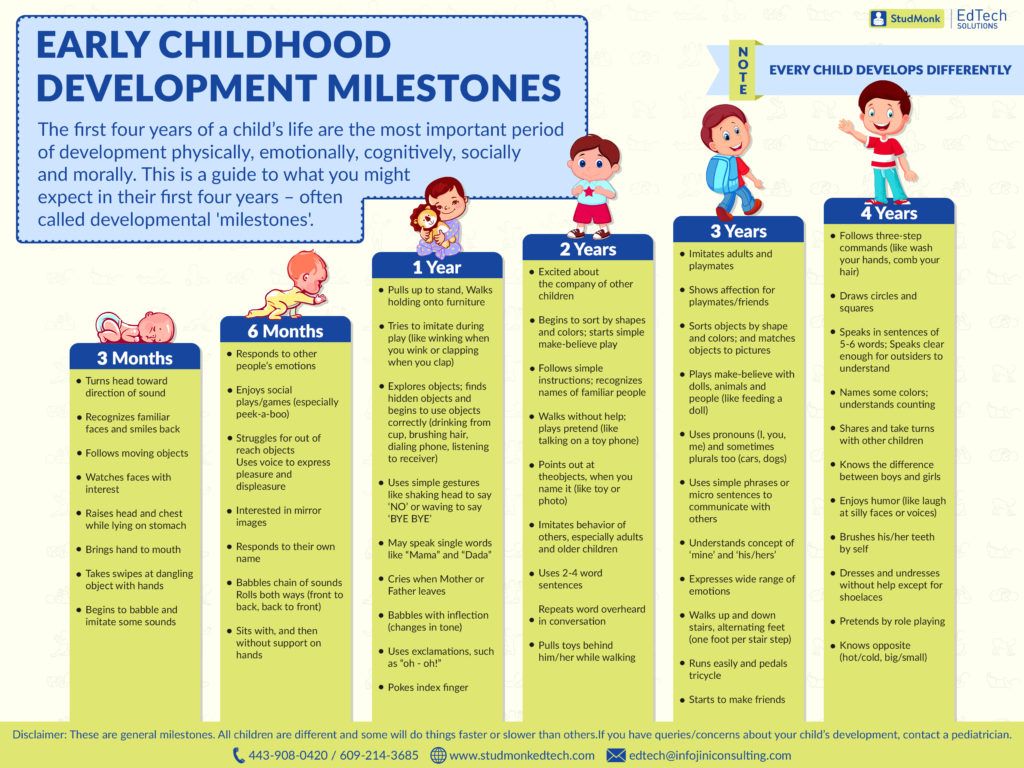 When the sperm penetrates the egg, changes occur in the protein coating of the egg to prevent other sperm from entering.
When the sperm penetrates the egg, changes occur in the protein coating of the egg to prevent other sperm from entering.
At the moment of fertilization, your baby’s genetic make-up is complete, including its sex. The sex of your baby depends on what sperm fertilizes the egg at the moment of conception. Generally, women have a genetic combination of XX and men have XY. Women provide each egg with an X. Each sperm can be either an X or a Y. If the fertilized egg and sperm is a combination of an X and Y, it’s a boy. If there are two Xs, it’s a girl.
What happens right after conception?
Within 24 hours after fertilization, the egg begins rapidly dividing into many cells. It remains in the fallopian tube for about three days after conception. Then the fertilized egg (now called a blastocyte) continues to divide as it passes slowly through the fallopian tube to the uterus. Once there, its next job is to attach to the endometrium. This is called implantation.
Before implantation though, the blastocyte breaks out of its protective covering.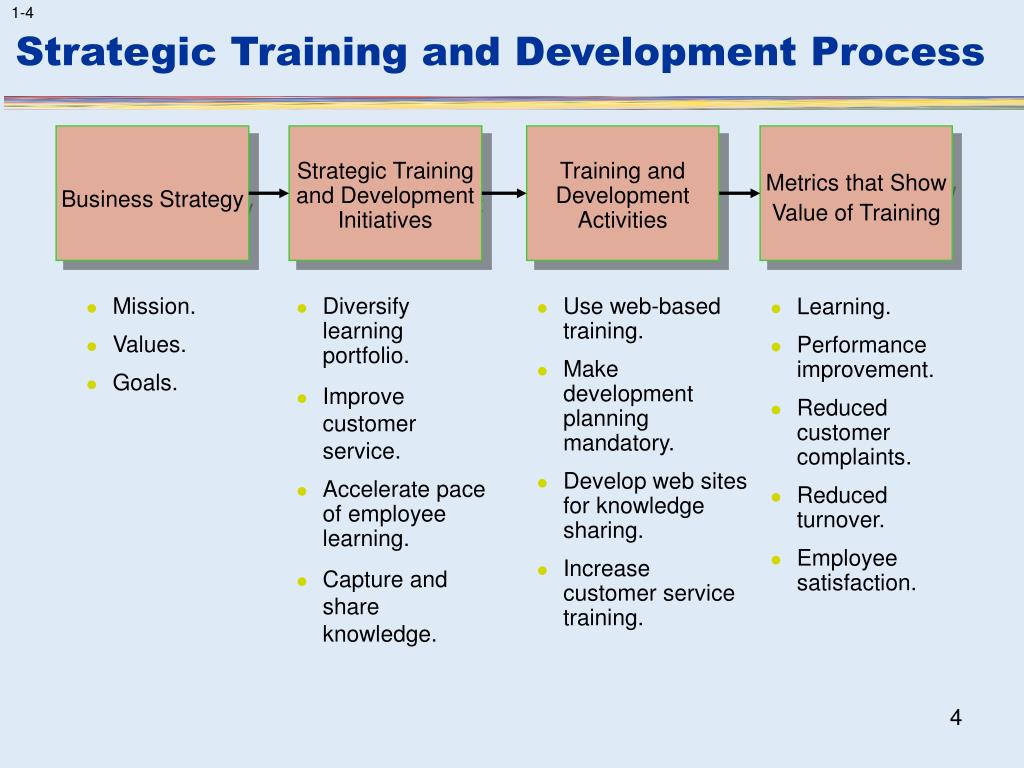 When the blastocyte makes contact with the endometrium, the two exchange hormones to help the blastocyte attach. Some women notice spotting (slight bleeding) during the one or two days when implantation happens. This is normal and isn’t something you should worry about. At this point, the endometrium becomes thicker and the cervix (the opening between your uterus and birth canal) is sealed by a plug of mucus.
When the blastocyte makes contact with the endometrium, the two exchange hormones to help the blastocyte attach. Some women notice spotting (slight bleeding) during the one or two days when implantation happens. This is normal and isn’t something you should worry about. At this point, the endometrium becomes thicker and the cervix (the opening between your uterus and birth canal) is sealed by a plug of mucus.
Within three weeks, the blastocyte cells ultimately form a little ball, or an embryo. By this time, the first nerve cells have formed.
Your developing fetus has already gone through a few name changes in the first few weeks of pregnancy. Generally, it's called an embryo from conception until the eighth week of development. After the eighth week, it's called a fetus until it’s born.
How early can I know I’m pregnant?
From the moment of conception, the hormone human chorionic gonadotrophin (hCG) will be present in your blood. This hormone is created by the cells that form the placenta (food source for the growing fetus).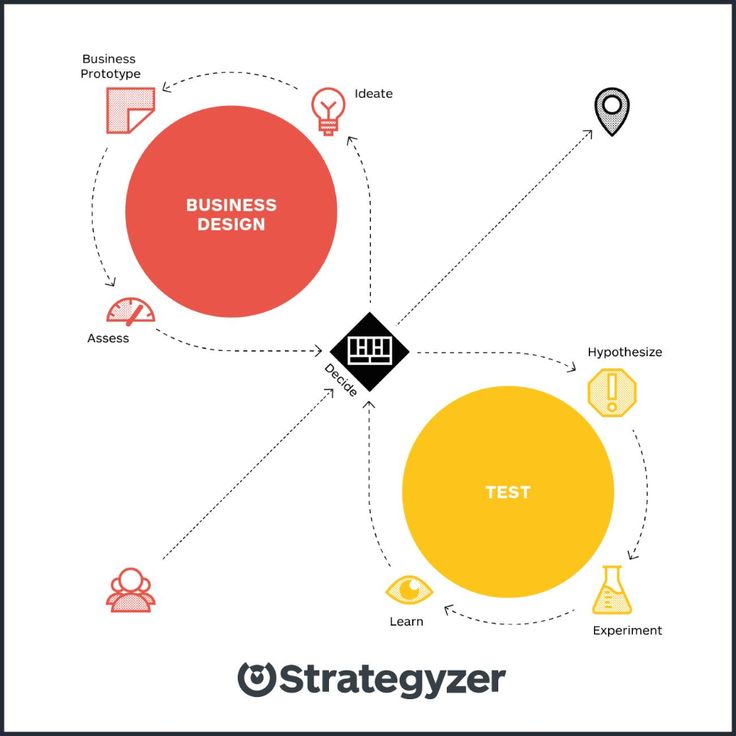 It’s also the hormone detected in a pregnancy test. Even though this hormone is there from the beginning, it takes time for it to build within your body. It typically takes three to four weeks from the first day of your last period for the hCG to increase enough to be detected by pregnancy tests.
It’s also the hormone detected in a pregnancy test. Even though this hormone is there from the beginning, it takes time for it to build within your body. It typically takes three to four weeks from the first day of your last period for the hCG to increase enough to be detected by pregnancy tests.
When should I reach out to my healthcare provider about a new pregnancy?
Most healthcare providers will have you wait to come in for an appointment until you have had a positive home pregnancy test. These tests are very accurate once you have enough hCG circulating throughout your body. This can be a few weeks after conception. It’s best to call your healthcare provider once you have a positive pregnancy test to schedule your first appointment.
When you call, your healthcare provider may ask you if you are taking a prenatal vitamin. These supplements contain folic acid. It’s important that you get at least 400mcg of folic acid each day during a pregnancy to make sure the fetus's neural tube (beginning of the brain and spine) develops correctly. Many healthcare providers suggest that you take prenatal vitamins with folic acid even when you aren’t pregnant. If you weren’t taking prenatal vitamins before your pregnancy, your provider may ask you to start as early as possible.
Many healthcare providers suggest that you take prenatal vitamins with folic acid even when you aren’t pregnant. If you weren’t taking prenatal vitamins before your pregnancy, your provider may ask you to start as early as possible.
What’s the timeline for fetal development?
The fetus will change a lot throughout a typical pregnancy. This time is divided into three stages, called trimesters. Each trimester is a set of about three months. Your healthcare provider will probably talk to you about fetal development in terms of weeks. So, if you are three months pregnancy, you are about 12 weeks.
You will see distinct changes in the fetus, and yourself, during each trimester.
Traditionally, we think of a pregnancy as a nine-month process. However, this isn’t always the case. A full-term pregnancy is 40 weeks, or 280 days. Depending on what months you are pregnant during (some are shorter and some longer) and what week you deliver, you could be pregnant for either nine months or 10 months.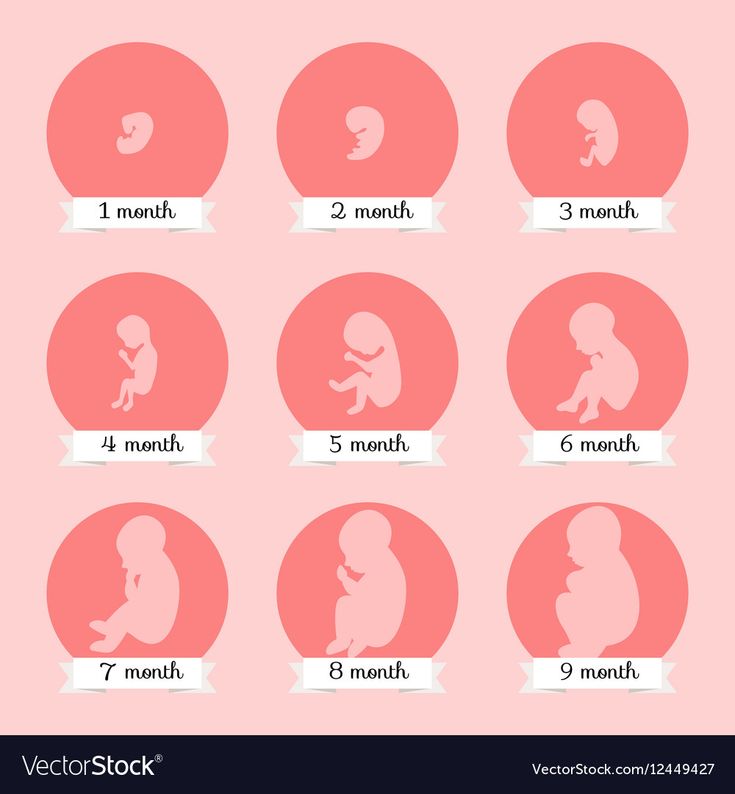 This is completely normal and healthy.
This is completely normal and healthy.
Once you get close to the end of your pregnancy, there are several category names you might hear regarding when you go into labor. These labels divide up the last few weeks of pregnancy. They’re also used to look out for certain complications in newborns. Babies that are born in the early term period or before may have a higher risk of breathing, hearing or learning issues than babies born a few weeks later in the full term time frame. When you’re looking at these labels, it’s important to know how they’re written. You may see the week first (38) and then you’ll see two numbers separated by a slash mark (6/7). This stands for how many days you currently are in the gestational week. So, if you see 38 6/7, it means that you are on day 6 of your 38th week.
The last few weeks of pregnancy are divided into the following groups:
- Early term: 37 0/7 weeks through 38 6/7 weeks.
- Full term: 39 0/7 weeks through 40 6/7 weeks.
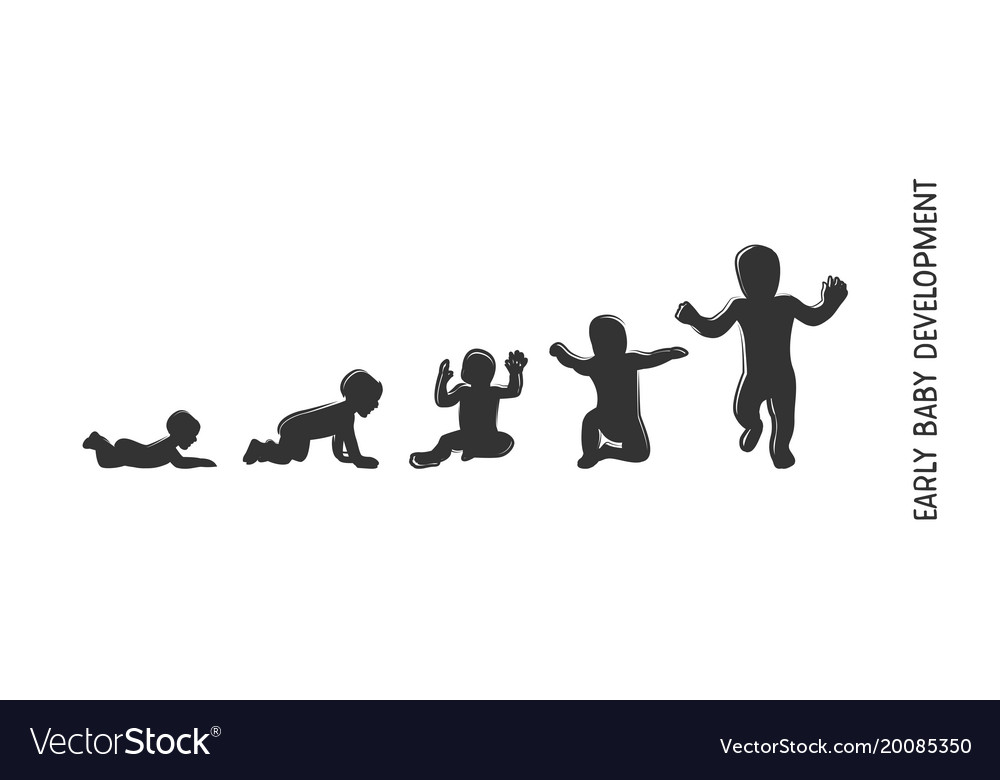
- Late term: 41 0/7 weeks through 41 6/7 weeks.
- Post term: 42 0/7 weeks and on.
Talk to your healthcare provider about any questions you may have about gestational age and due date.
Stages of Growth Month-by-Month in Pregnancy
First trimester
The first trimester will span from conception to 12 weeks. This is generally the first three months of pregnancy. During this trimester, the fertilized egg will change from a small grouping of cells to a fetus that is starting to have a baby’s features.
Month 1 (weeks 1 through 4)
As the fertilized egg grows, a water-tight sac forms around it, gradually filling with fluid. This is called the amniotic sac, and it helps cushion the growing embryo.
During this time, the placenta also develops. The placenta is a round, flat organ that transfers nutrients from the mother to the fetus, and transfers wastes from the fetus. Think of the placenta as a food source for the fetus throughout your pregnancy.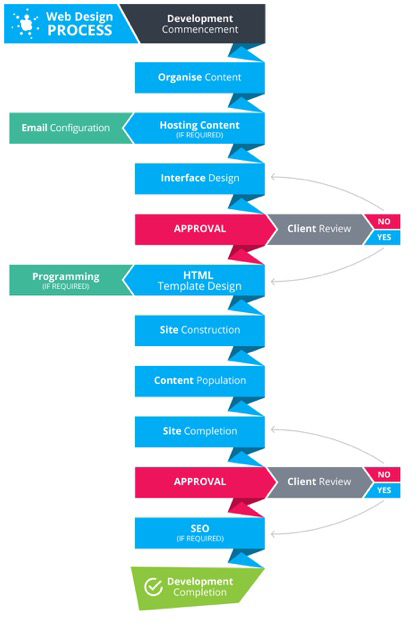
In these first few weeks, a primitive face will take form with large dark circles for eyes. The mouth, lower jaw and throat are developing. Blood cells are taking shape, and circulation will begin. The tiny "heart" tube will beat 65 times a minute by the end of the fourth week.
By the end of the first month, the fetus is about 1/4 inch long – smaller than a grain of rice.
Month 2 (weeks 5 through 8)
Facial features continue to develop. Each ear begins as a little fold of skin at the side of the head. Tiny buds that eventually grow into arms and legs are forming. Fingers, toes and eyes are also forming.
The neural tube (brain, spinal cord and other neural tissue of the central nervous system) is well formed now. The digestive tract and sensory organs begin to develop too. Bone starts to replace cartilage.
The head is large in proportion to the rest of the body at this point. At about 6 weeks, a heartbeat can usually be detected.
After the 8th week, healthcare providers refer to it as a fetus instead of an embryo.
By the end of the second month, the fetus is about 1 inch long and weighs about 1/30 of an ounce.
Month 3 (weeks 9 through 12)
The arms, hands, fingers, feet and toes are fully formed. At this stage, the fetus is starting to explore a bit by doing things like opening and closing its fists and mouth. Fingernails and toenails are beginning to develop and the external ears are formed. The beginnings of teeth are forming under the gums. The reproductive organs also develop, but sex is still difficult to distinguish on ultrasound.
By the end of the third month, the fetus is fully formed. All the organs and limbs (extremities) are present and will continue to develop in order to become functional. The circulatory and urinary systems are also working and the liver produces bile.
At the end of the third month, the fetus is about 4 inches long and weighs about 1 ounce.
Since the most critical development has taken place, your chance of miscarriage drops considerably after three months.
Second trimester
This middle section of pregnancy is often thought of as the best part of the experience. By this time, any morning sickness is probably gone and the discomfort of early pregnancy has faded. The fetus will start to develop facial features during this month. You may also start to feel movement as the fetus flips and turns in the uterus. During this trimester, many people find out whether their baby will be designated male or female at birth. This is typically done during an anatomy scan (an ultrasound that checks physical development) around 20 weeks.
Month 4 (weeks 13 through 16)
The fetal heartbeat may now be audible through an instrument called a doppler. The fingers and toes are well-defined. Eyelids, eyebrows, eyelashes, nails and hair are formed. Teeth and bones become denser. The fetus can even suck his or her thumb, yawn, stretch and make faces.
The nervous system is starting to function. The reproductive organs and genitalia are now fully developed, and your doctor can see on ultrasound if the fetus will be designated male or female at birth.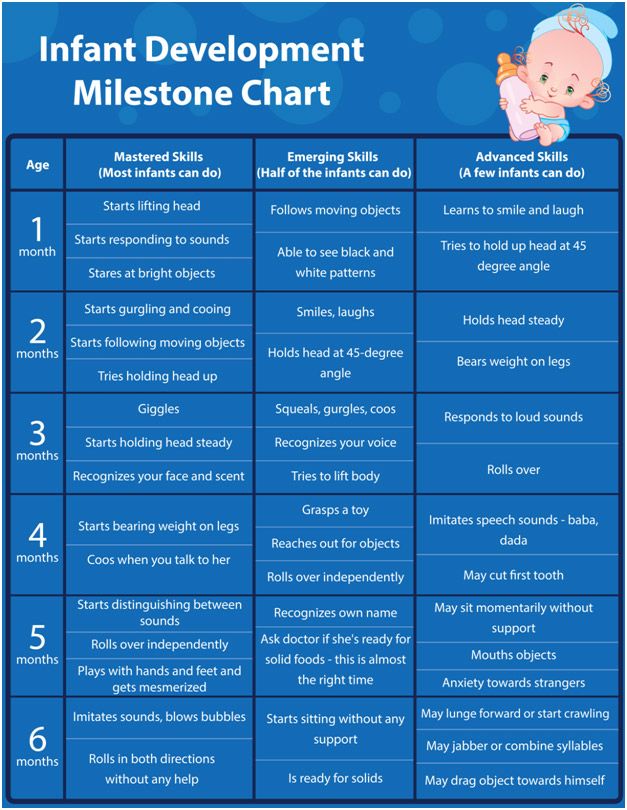
By the end of the fourth month, the fetus is about 6 inches long and weighs about 4 ounces.
Month 5 (weeks 17 through 20)
At this stage, you may begin to feel the fetus moving around. The fetus is developing muscles and exercising them. This first movement is called quickening and can feel like a flutter.
Hair begins to grow on the head. The shoulders, back and temples are covered by a soft fine hair called lanugo. This hair protects the fetus and is usually shed at the end of your baby's first week of life.
The skin is covered with a whitish coating called vernix caseosa. This "cheesy" substance is thought to protect fetal skin from the long exposure to the amniotic fluid. This coating is shed just before birth.
By the end of the fifth month, the fetus is about 10 inches long and weighs from 1/2 to 1 pound.
Month 6 (weeks 21 through 24)
If you could look inside the uterus right now, you would see that the fetus's skin is reddish in color, wrinkled and veins are visible through translucent skin.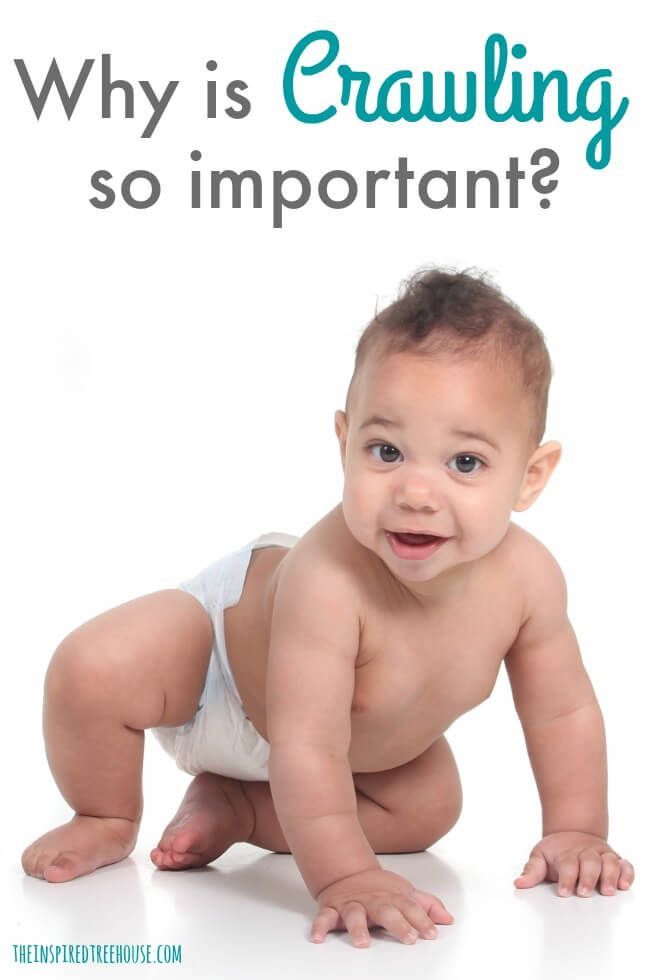 The finger and toe prints are visible. In this stage, the eyelids begin to part and the eyes open.
The finger and toe prints are visible. In this stage, the eyelids begin to part and the eyes open.
The fetus responds to sounds by moving or increasing the pulse. You may notice jerking motions if the fetus hiccups.
If born prematurely, your baby may survive after the 23rd week with intensive care.
By the end of the sixth month, the fetus is about 12 inches long and weighs about 2 pounds.
Month 7 (weeks 25 through 28)
The fetus continues to mature and develop reserves of body fat. At this point, hearing is fully developed. The fetus changes position frequently and responds to stimuli, including sound, pain and light. The amniotic fluid begins to diminish.
If born prematurely, your baby would be likely to survive after the seventh month.
At the end of the seventh month, the fetus is about 14 inches long and weighs from 2 to 4 pounds.
Third trimester
This is the final part of your pregnancy. You may be tempted to start the countdown till your due date and hope that it would come early, but each week of this final stage of development helps the fetus prepare for birth.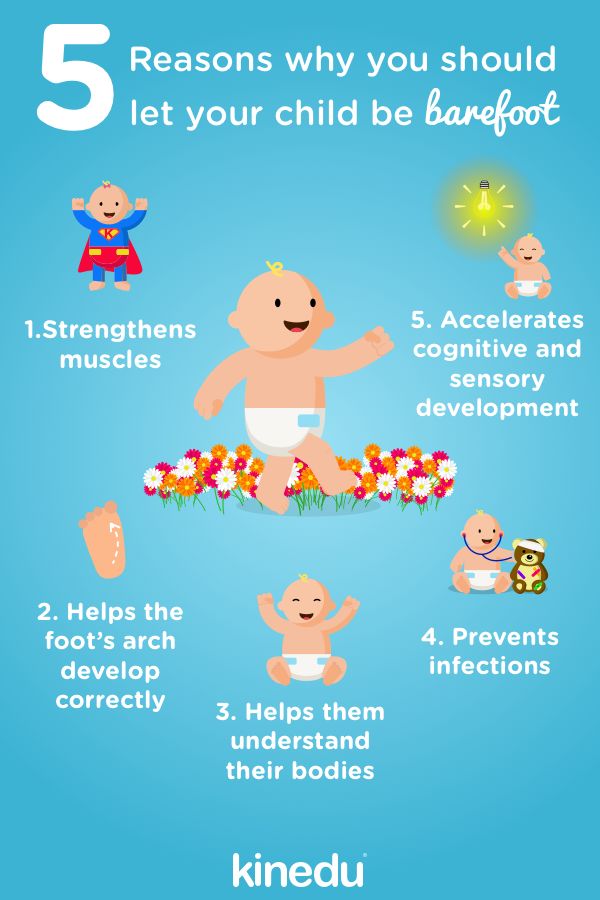 Throughout the third trimester, the fetus gains weight quickly, adding body fat that will help after birth.
Throughout the third trimester, the fetus gains weight quickly, adding body fat that will help after birth.
Remember, even though popular culture only mentions nine months of pregnancy, you may actually be pregnant for 10 months. The typical, full-term pregnancy is 40 weeks, which can take you into a tenth month. It’s also possible that you can go past your due date by a week or two (41 or 42 weeks). Your healthcare provider will monitor you closely as you approach your due date. If you pass your due date, and don’t go into spontaneous labor, your provider may induce you. This means that medications will be used to make you go into labor and have the baby. Make sure to talk to your healthcare provider during this trimester about your birth plan.
Month 8 (weeks 29 through 32)
The fetus continues to mature and develop reserves of body fat. You may notice more kicking. The brain developing rapidly at this time, and the fetus can see and hear. Most internal systems are well developed, but the lungs may still be immature.
The fetus is about 18 inches long and weighs as much as 5 pounds.
Month 9 (weeks 33 through 36)
During this stage, the fetus continues to grow and mature. The lungs are close to being fully developed at this point.
The fetus has coordinated reflexes and can blink, close the eyes, turn the head, grasp firmly, and respond to sounds, light and touch.
The fetus is about 17 to 19 inches long and weighs from 5 ½ pounds to 6 ½ pounds.
Month 10 (Weeks 37 through 40)
In this final month, you could go into labor at any time. You may notice that less movement because space is tight. At this point, The fetus's position may have changed to prepare for birth. Ideally, it's head down in your uterus. You may feel very uncomfortable in this final stretch of time as the fetus drops down into your pelvis and prepares for birth.
Your baby is ready to meet the world at this point. They are about 18 to 20 inches long and weigh about 7 pounds.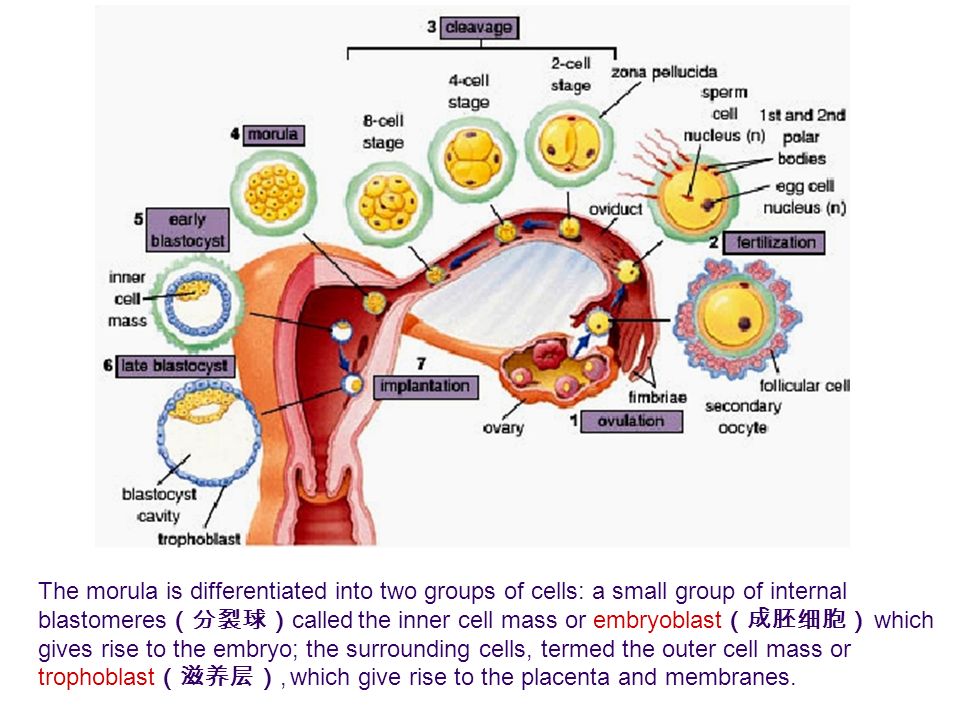
Fetal development: MedlinePlus Medical Encyclopedia
URL of this page: //medlineplus.gov/ency/article/002398.htm
To use the sharing features on this page, please enable JavaScript.
Learn how your baby is conceived and how your baby develops inside the mother's womb.
WEEK BY WEEK CHANGES
Gestation is the period of time between conception and birth when a baby grows and develops inside the mother's womb. Because it's impossible to know exactly when conception occurs, gestational age is measured from the first day of the mother's last menstrual cycle to the current date. It is measured in weeks.
This means that during weeks 1 and 2 of pregnancy, a woman is not yet pregnant. This is when your body is preparing for a baby. A normal gestation lasts anywhere from 37 to 42 weeks.
Week 1 to 2
- The first week of pregnancy starts with the first day of a woman's menstrual period.
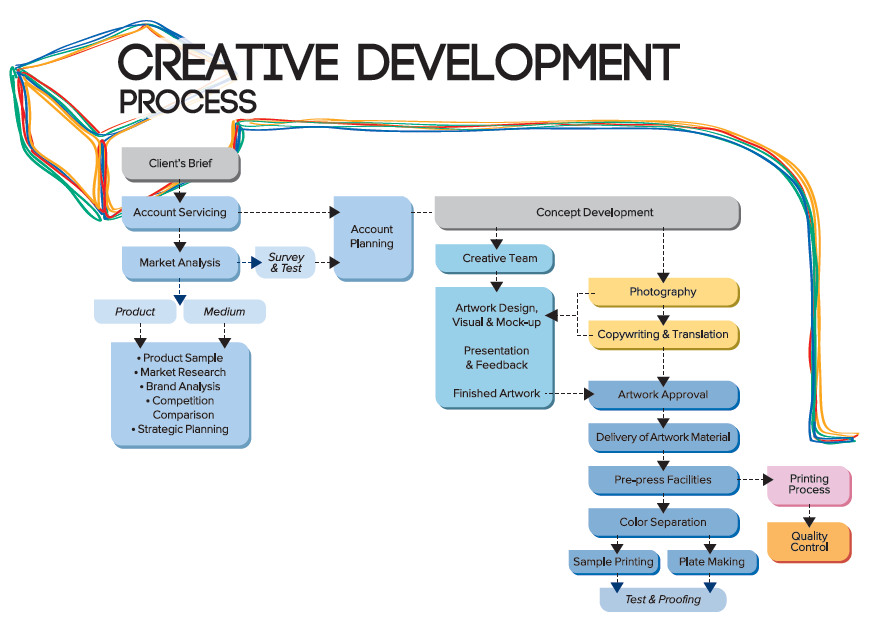 She is not yet pregnant.
She is not yet pregnant. - During the end of the second week, an egg is released from an ovary. This is when you are most likely to conceive if you have unprotected intercourse.
Week 3
- During intercourse, sperm enters the vagina after the man ejaculates. The strongest sperm will travel through the cervix (the opening of the womb, or uterus), and into the fallopian tubes.
- A single sperm and the mother's egg cell meet in the fallopian tube. When the single sperm enters the egg, conception occurs. The combined sperm and egg is called a zygote.
- The zygote contains all of the genetic information (DNA) needed to become a baby. Half the DNA comes from the mother's egg and half from the father's sperm.
- The zygote spends the next few days traveling down the fallopian tube. During this time, it divides to form a ball of cells called a blastocyst.
- A blastocyst is made up of an inner group of cells with an outer shell.
- The inner group of cells will become the embryo.
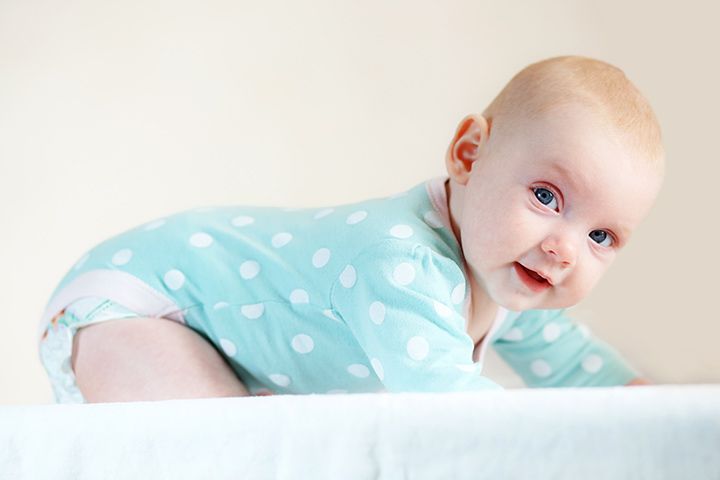 The embryo is what will develop into your baby.
The embryo is what will develop into your baby. - The outer group of cells will become structures, called membranes, which nourish and protect the embryo.
Week 4
- Once the blastocyst reaches the uterus, it buries itself in the uterine wall.
- At this point in the mother's menstrual cycle, the lining of the uterus is thick with blood and ready to support a baby.
- The blastocyst sticks tightly to the wall of the uterus and receives nourishment from the mother's blood.
Watch this video about:Cell division
Week 5
- Week 5 is the start of the "embryonic period." This is when all the baby's major systems and structures develop.
- The embryo's cells multiply and start to take on specific functions. This is called differentiation.
- Blood cells, kidney cells, and nerve cells all develop.
- The embryo grows rapidly, and the baby's external features begin to form.
- Your baby's brain, spinal cord, and heart begin to develop.

- Baby's gastrointestinal tract starts to form.
- It is during this time in the first trimester that the baby is most at risk for damage from things that may cause birth defects. This includes certain medicines, illegal drug use, heavy alcohol use, infections such as rubella, and other factors.
Weeks 6 to 7
- Arm and leg buds start to grow.
- Your baby's brain forms into 5 different areas. Some cranial nerves are visible.
- Eyes and ears begin to form.
- Tissue grows that will become your baby's spine and other bones.
- Baby's heart continues to grow and now beats at a regular rhythm. This can be seen by vaginal ultrasound.
- Blood pumps through the main vessels.
Week 8
- Baby's arms and legs have grown longer.
- Hands and feet begin to form and look like little paddles.
- Your baby's brain continues to grow.
- The lungs start to form.
Week 9
- Nipples and hair follicles form.
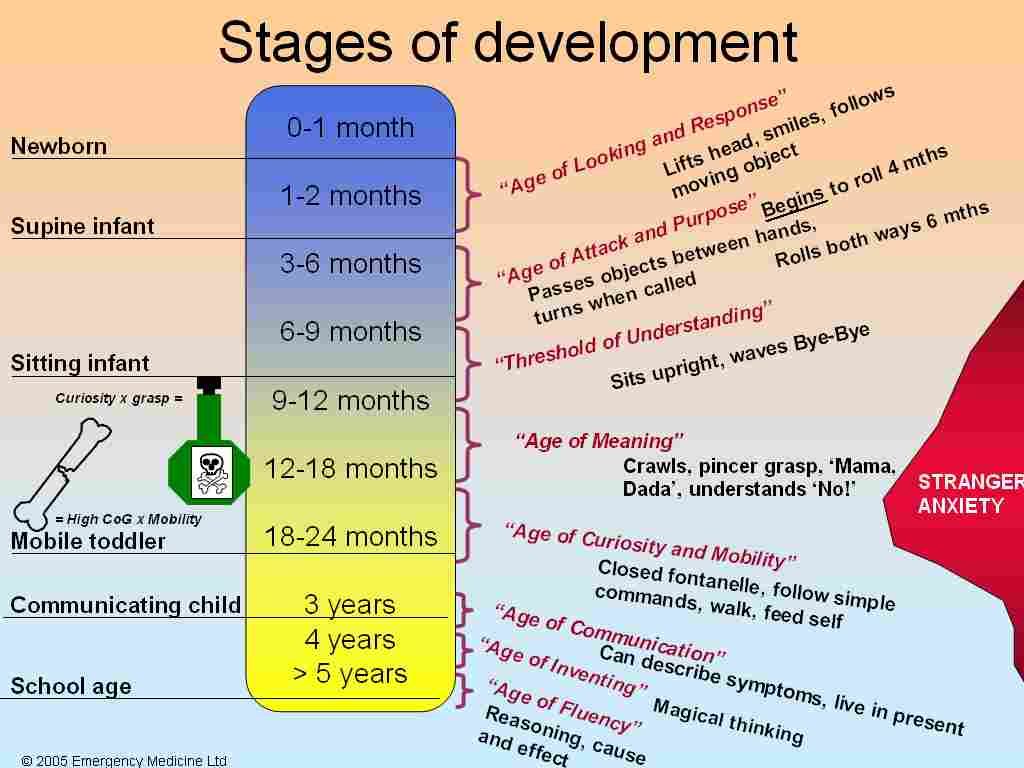
- Arms grow and elbows develop.
- Baby's toes can be seen.
- All baby's essential organs have begun to grow.
Week 10
- Your baby's eyelids are more developed and begin to close.
- The outer ears begin to take shape.
- Baby's facial features become more distinct.
- The intestines rotate.
- At the end of the 10th week of pregnancy, your baby is no longer an embryo. It is now a fetus, the stage of development up until birth.
Weeks 11 to 14
- Your baby's eyelids close and will not reopen until about the 28th week.
- Baby's face is well-formed.
- Limbs are long and thin.
- Nails appear on the fingers and toes.
- Genitals appear.
- Baby's liver is making red blood cells.
- The head is very large -- about half of baby's size.
- Your little one can now make a fist.
- Tooth buds appear for the baby teeth.
Weeks 15 to 18
- At this stage, baby's skin is almost transparent.
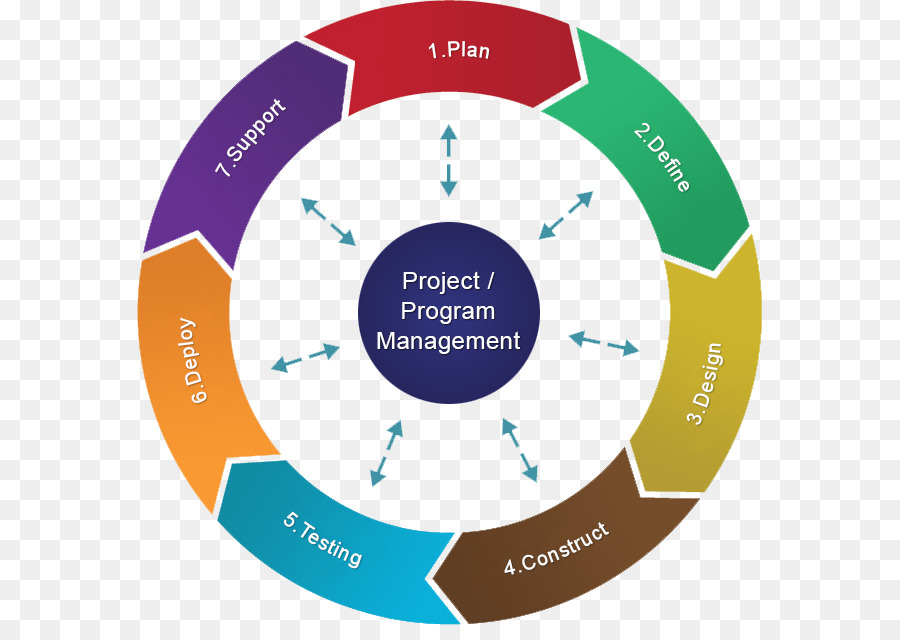
- Fine hair called lanugo develops on baby's head.
- Muscle tissue and bones keep developing, and bones become harder.
- Baby begins to move and stretch.
- The liver and pancreas produce secretions.
- Your little one now makes sucking motions.
Weeks 19 to 21
- Your baby can hear.
- The baby is more active and continues to move and float around.
- The mother may feel a fluttering in the lower abdomen. This is called quickening, when mom can feel baby's first movements.
- By the end of this time, baby can swallow.
Week 22
- Lanugo hair covers baby's entire body.
- Meconium, baby's first bowel movement, is made in the intestinal tract.
- Eyebrows and lashes appear.
- The baby is more active with increased muscle development.
- The mother can feel the baby moving.
- Baby's heartbeat can be heard with a stethoscope.
- Nails grow to the end of baby's fingers.
Weeks 23 to 25
- Bone marrow begins to make blood cells.
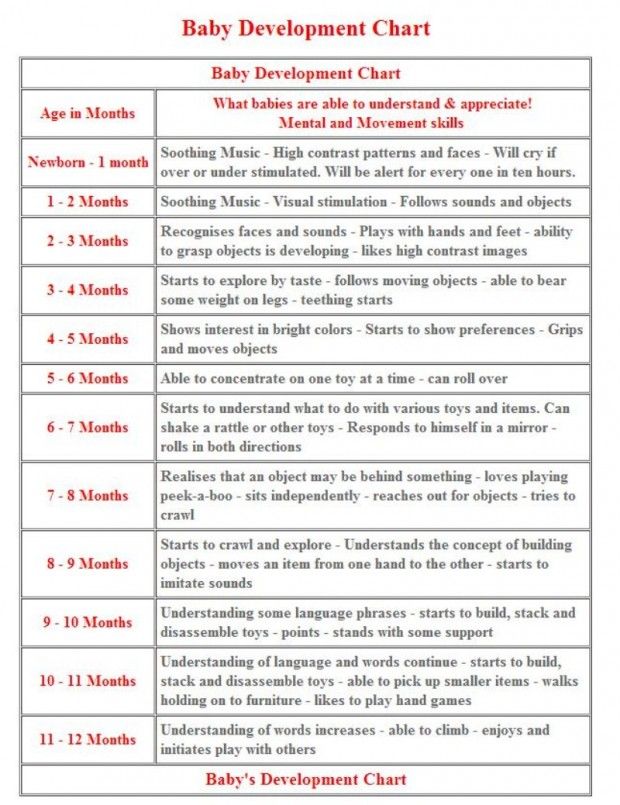
- The lower airways of the baby's lungs develop.
- Your baby begins to store fat.
Week 26
- Eyebrows and eyelashes are well-formed.
- All parts of baby's eyes are developed.
- Your baby may startle in response to loud noises.
- Footprints and fingerprints are forming.
- Air sacs form in baby's lungs, but lungs are still not ready to work outside the womb.
Weeks 27 to 30
- Baby's brain grows rapidly.
- The nervous system is developed enough to control some body functions.
- Your baby's eyelids can open and close.
- The respiratory system, while immature, produces surfactant. This substance helps the air sacs fill with air.
Weeks 31 to 34
- Your baby grows quickly and gains a lot of fat.
- Rhythmic breathing occurs, but baby's lungs are not fully mature.
- Baby's bones are fully developed, but are still soft.
- Your baby's body begins storing iron, calcium, and phosphorus.
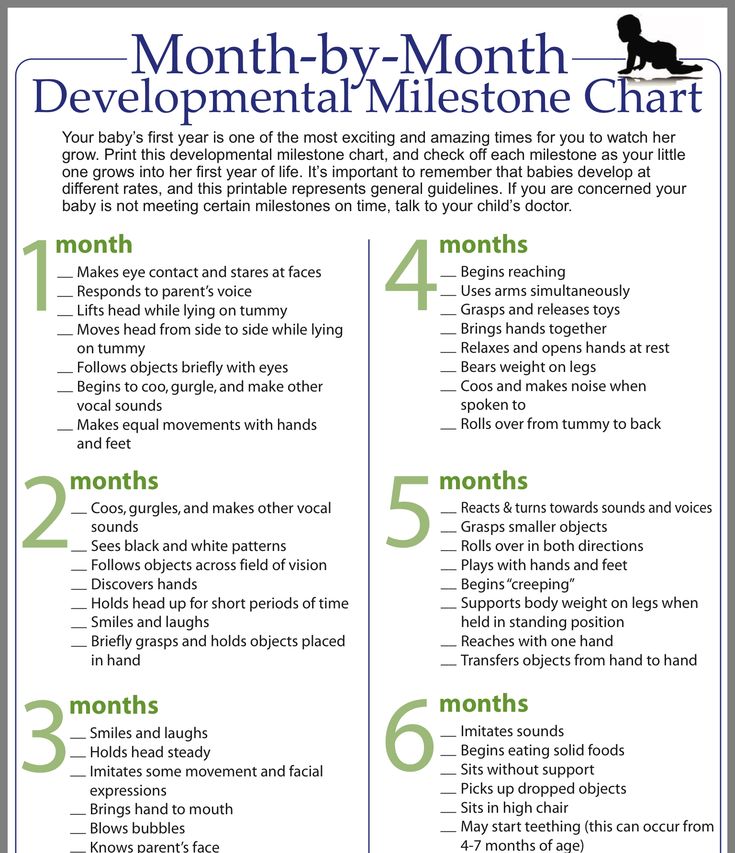
Weeks 35 to 37
- Baby weighs about 5 1/2 pounds (2.5 kilograms).
- Your baby keeps gaining weight, but will probably not get much longer.
- The skin is not as wrinkled as fat forms under the skin.
- Baby has definite sleeping patterns.
- Your little one's heart and blood vessels are complete.
- Muscles and bones are fully developed.
Week 38 to 40
- Lanugo is gone except for on the upper arms and shoulders.
- Fingernails may extend beyond fingertips.
- Small breast buds are present on both sexes.
- Head hair is now coarse and thicker.
- In your 40th week of pregnancy, it has been 38 weeks since conception, and your baby could be born any day now.
Zygote; Blastocyst; Embryo; Fetus
- Fetus at 3.5 weeks
- Fetus at 7.5 weeks
- Fetus at 8.5 weeks
- Fetus at 10 weeks
- Fetus at 12 weeks
- Fetus at 16 weeks
- 24-week fetus
- Fetus at 26 to 30 weeks
- Fetus at 30 to 32 weeks
Feigelman S, Finkelstein LH.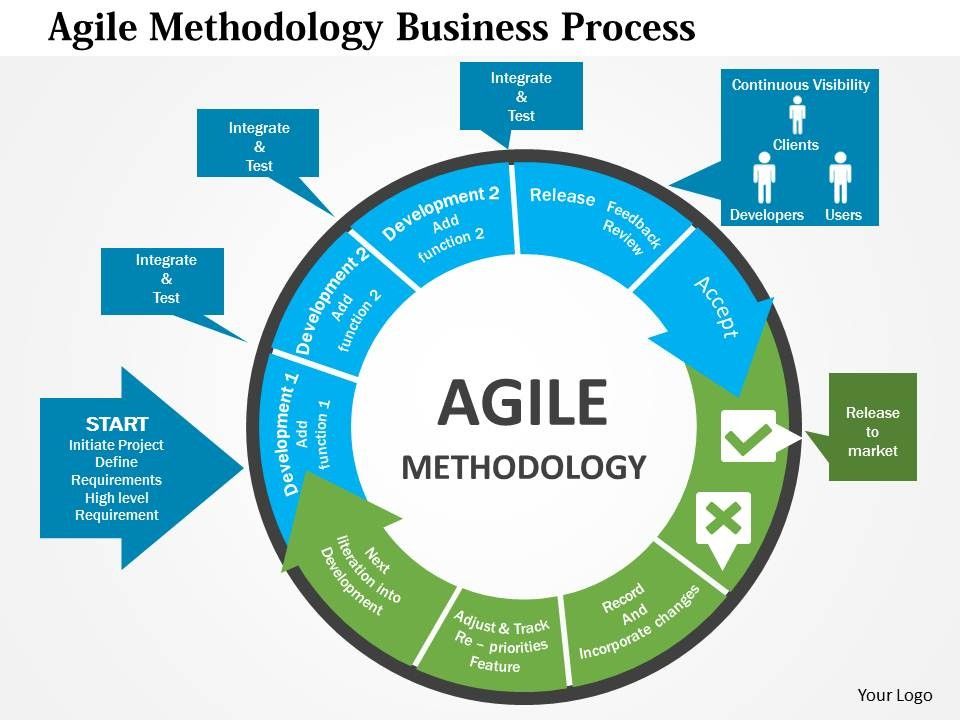 Assessment of fetal growth and development. In: Kliegman RM, St. Geme JW, Blum NJ, Shah SS, Tasker RC, Wilson KM, eds. Nelson Textbook of Pediatrics. 21st ed. Philadelphia, PA: Elsevier; 2020:chap 20.
Assessment of fetal growth and development. In: Kliegman RM, St. Geme JW, Blum NJ, Shah SS, Tasker RC, Wilson KM, eds. Nelson Textbook of Pediatrics. 21st ed. Philadelphia, PA: Elsevier; 2020:chap 20.
Ross MG, Desai M, Ervin MG. Fetal development, physiology, and effects on long-term health. In: Landon MB, Galan HL, Jauniaux ERM, et al, eds. Gabbe's Obstetrics: Normal and Problem Pregnancies. 8th ed. Philadelphia, PA: Elsevier; 2021:chap 2.
Updated by: John D. Jacobson, MD, Department of Obstetrics and Gynecology, Loma Linda University School of Medicine, Loma Linda, CA. Also reviewed by David Zieve, MD, MHA, Medical Director, Brenda Conaway, Editorial Director, and the A.D.A.M. Editorial team.
Stages of development of a newborn | Multidisciplinary center Healthy child
From birth to 10 days of a child's life.
- Keeps a moving object in the field of view (step tracking) - from a supine position, fixes with a glance for 5-10 seconds a moving object located in his field of view at a distance of 40-50 centimeters.
 Eye movements are spasmodic, sometimes accompanied by a turn of the head. General movements are inhibited.
Eye movements are spasmodic, sometimes accompanied by a turn of the head. General movements are inhibited. - Starts and blinks at a sharp sound (auditory orienting reaction) - 2-3 claps are made to the right and left of the child, out of his field of vision.
From 10 to 20 days of a child's life.
- Keeps an immovable object in the field of vision - fixes with a glance for 5-10 seconds an immovable object located in its field of vision at a distance of 40-50 centimeters. General movements are inhibited.
- Calms down with a strong sound (auditory concentration response) for 10-15 seconds.
1 month of a child's life.
- Follows - smoothly traces a bright object that is in its field of view at a distance of 40-50 centimeters.
- Listens to the voice of an adult, the sound of a toy (prolonged auditory concentration)
- The first smile in response to the addressed speech.

- In the prone position, raises and holds the head for 5-20 seconds.
- Emits separate sounds in response to a conversation, sometimes the reaction is delayed by a few seconds.
2 months of a child's life.
- Looks at a motionless object that attracts attention for a long time and follows a moving object for a long time (long-term visual concentration).
- Turning the head towards the sound stimulus, "search" movements of the head and eyes with a prolonged sound (search reaction).
- Smiles, turns head, holds eyes on another child for 15-30 seconds (long-term visual focus on another child).
- Spontaneously pronounces individual sounds.
3 months of a child's life.
- Visual concentration in a vertical position - a child from a position in the arms of an adult follows for 30-40 seconds a stationary or moving object or the face of an adult talking to him.
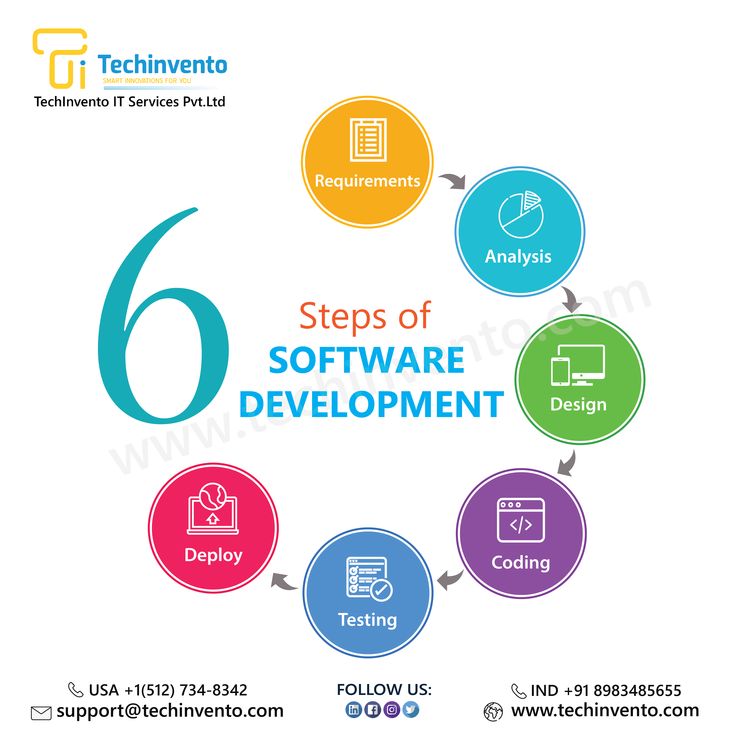
- An "animation" complex appears in response to speech addressed to him, actively searches with his eyes for the source of the sound (another child making sounds)
- Randomly bumping into toys located at a distance of 10-15 centimeters above his chest, he revives, bumps again, tries to grab the toy and traces the movements of his hand with his eyes.
- Lying on his stomach, he leans on his forearms and raises his head up to 2-2.5 minutes. With support, he leans for 45-60 seconds on firm support with his legs bent at the hip joints, leaning on the entire foot. vertical position up to 1-1.5 minutes.
4 months of a child's life.
- Recognizes the mother, rejoices - looks at the mother expectantly, as soon as she speaks - smiles joyfully, coos, reaches for the mother. When the mother leaves, she expresses displeasure.
- Turns his head towards an invisible sound source, finds it with his eyes and follows it for 5-10 seconds.
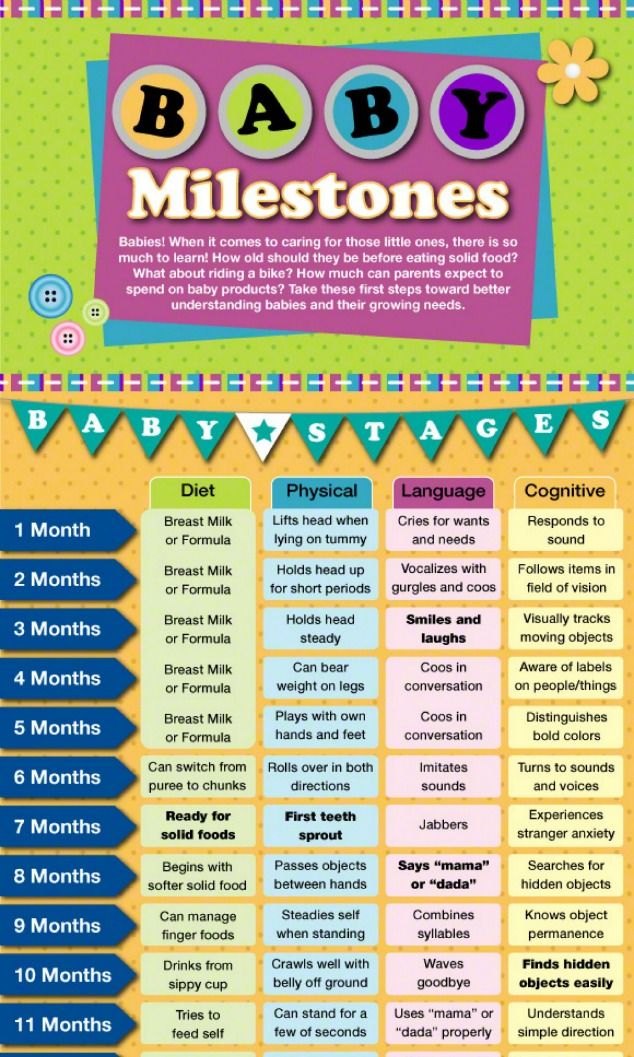
- During wakefulness, a "complex of revival" often and easily arises, laughs loudly in response to a verbal appeal, reaches out to another child.
- Examining, grasping and feeling toys that attract attention.
- Gulit.
- Grabs and holds mother's breast or bottle during feeding.
5 months of a child's life.
- Distinguishes close people from strangers (reacts differently to faces) - at the sight of the face of a loved one, a “complex of revival” arises, at the sight of a stranger, movements are slowed down, alertness appears, the child frowns and may cry.
- Recognizes the voice of mother and loved one. Distinguishes between strict and affectionate intonation of speech. Differentially reacts to it.
- Rejoices with another child, takes a toy from his hands, hums.
- Clearly picks up toys from an adult's hands, often picks up toys with one hand, holds them in the hand for 1-2 minutes.
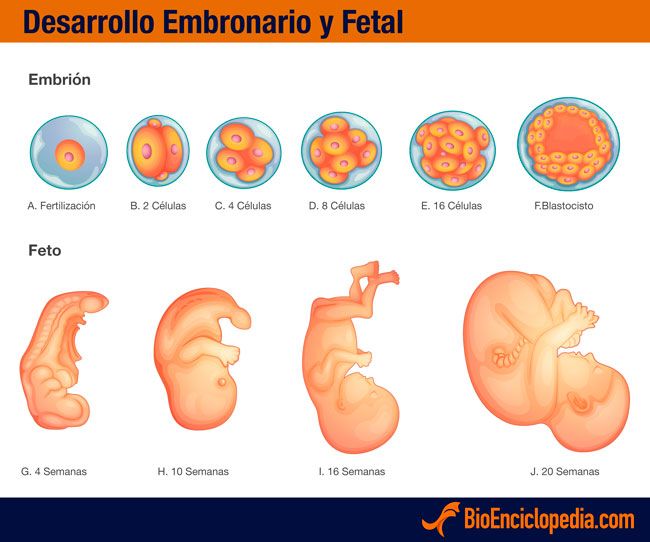
- Lies on the stomach for a long time, raising the body and leaning on the palms of straightened arms. Rolls from back to stomach. Stands upright and stable with support for 3-4 minutes.
- Long melodious humming
- Eats thick food from a spoon, opens mouth and removes food with lips, eats slowly.
6 months of a child's life.
- Recognizes his own name (rejoices, turns towards the adult), distinguishes between his own and someone else's name.
- Takes toys freely from different positions, plays, shifts toys from hand to hand.
- Rolls over from back to stomach. Moves slowly, moving hands or crawling a little, trying to get a toy.
- Beginning to babble (pronounces individual syllables, often once), listens to the adult and tries to repeat the syllables.
- Eats well from a spoon, drinks liquid food from a cup.
7 months of a child's life.
- Actively manipulates toys.
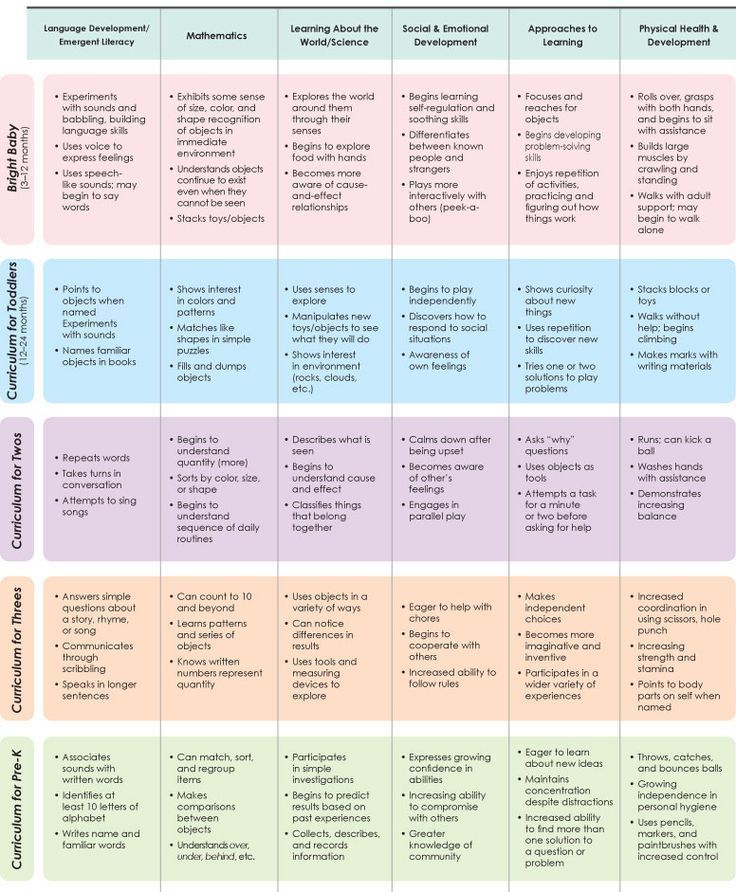
- Crawls well and a lot in various directions
- To the question "Where?" finds a familiar object with a glance (repeatedly called and constantly in one place)
- He babbles for a long time, repeats the same syllables.
8 months of a child's life.
- Observes the actions of another child, laughs, babbles.
- Imitates the actions of adults (rolls the ball, opens the lid, etc.)
- He sits, sits, lies down. He gets up, holding onto the barrier with his hands, stands and lowers himself. Steps over, holding on to the barrier.
- Performs previously learned actions - performs “patricks”, “give me a pen” without showing.
- Loudly, clearly, repeats various syllables.
- Holds and eats bread.
9 months of a child's life.
- Acts a lot by imitation, uses objects differently.
- Passes from object to object, holding on to them with his hands (the objects should be at a distance of about 35 centimeters from each other).
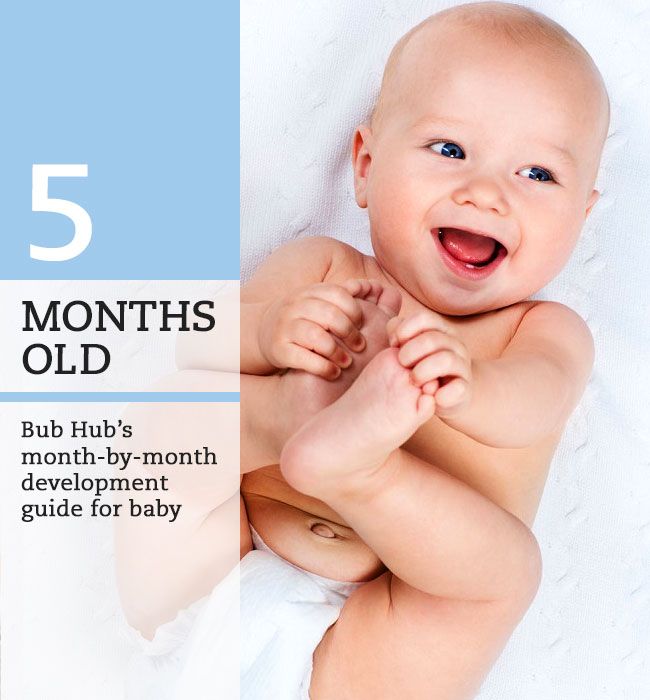
- Knows his name and turns to the call. To the question "Where?" finds familiar objects in different places, regardless of their permanent location.
- Imitating an adult, repeats known syllables after him.
- Drinks from a cup, holding it with his hands.
- Neatness skills are being formed (calmly relates to the planting process).
10 months of a child's life.
- Performs learned actions independently or at the request of an adult.
- With the help of an adult or holding onto the railing sideways, enters a low hill and descends with a side step
- On command "give" finds and gives familiar objects.
- Imitating an adult, repeats after him previously unknown syllables.
11 months of a child's life.
- She rejoices at the appearance of other children, selectively reacts to them.
- Masters new actions, performs them by order and by imitation (puts a cube on a cube, removes and puts rings with large holes on the rod).
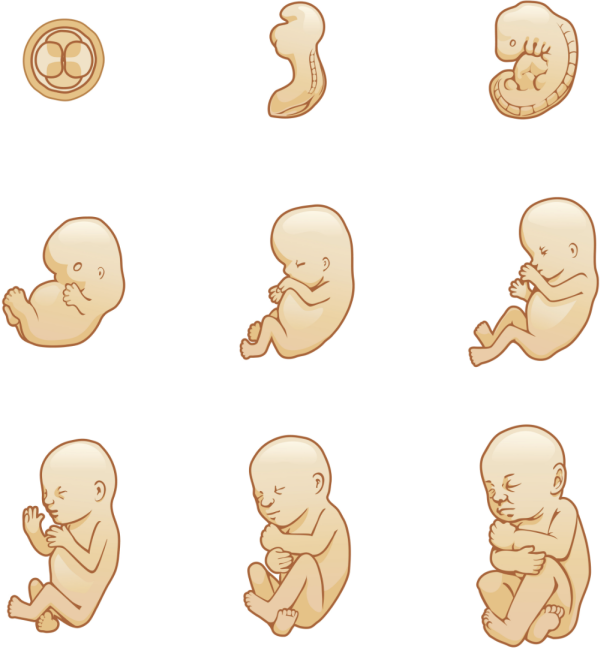 Performs previously learned actions on verbal instructions (without showing).
Performs previously learned actions on verbal instructions (without showing). - Stands independently, takes first independent steps.
- The first generalizations appear in understood speech (brings 2-3 toys of the same name - ball, car, doll)
- Pronounces the first designation words (lightweight words) - “kis-kis”, “av-av”, “give”.
12 months of a child's life
- Distinguishes objects by shape (cubes, bricks, etc.), recognizes photographs of a familiar person (mother, father).
- Plays with other children, looking for a hidden toy.
- Walks independently, without support, with alternating steps.
- Understands the word "not allowed", stops the prohibited action.
- Easily imitates new syllables, pronounces 6-10 facilitated words.
- He himself drinks from a cup, takes the dishes with his hands and puts them on the table.
1 year 3 months of a child's life.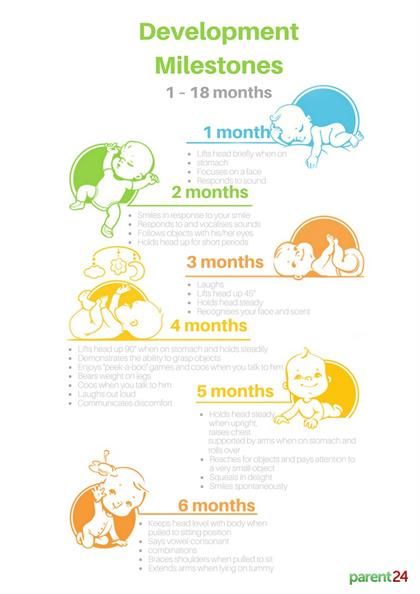
- Increasing the stock of understood words, performs at least 3 instructions from an adult.
- Actively uses babble and light words.
- Oriented in the size of objects (more or less, with a difference exceeding 3 centimeters).
- Independently reproduces previously learned actions during the game.
- Walks for a long time without sitting down, changes position (squats, bends, turns, backs away).
- Eats solid food with a spoon by himself.
1 year 6 months of a child's life.
- Summarizes objects according to essential features in understood speech (finds objects that are homogeneous in feature)
- The correct analogues of lightened words appear (car - instead of "beep", etc.).
- Oriented in 3-4 contrasting forms of objects.
- Steps over low obstacles with a side step.
- Eats liquid food on his own with a spoon (holds the stalk on top in his fist).
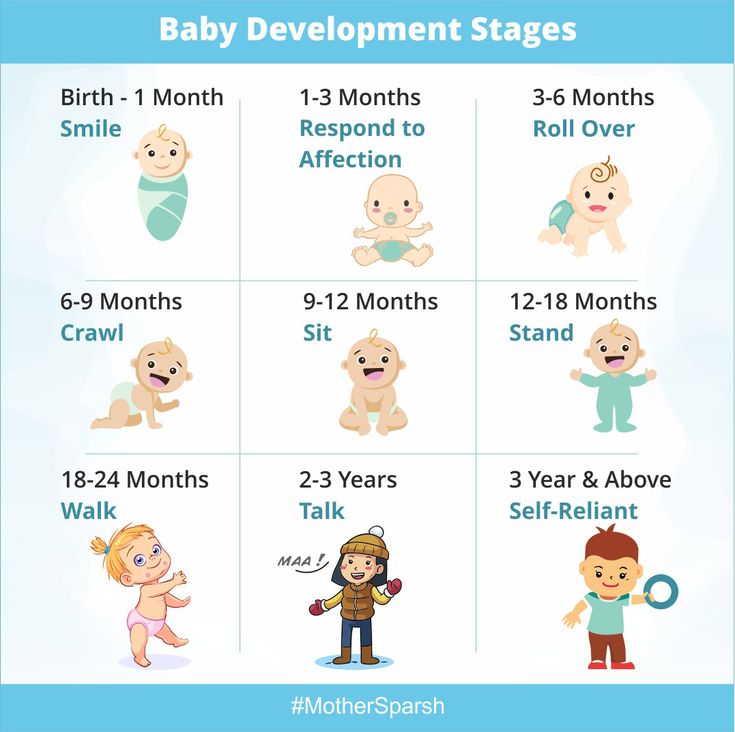
1 year 9 months of a child's life.
- Understands a simple adult story from a picture and answers questions.
- Uses words and two-word sentences.
- Oriented in 3-4 contrasting values of objects with a difference of 3 centimeters.
- Walks on a limited surface, raised slightly above the floor, without the help of an adult.
- Partially undresses with the help of an adult.
- Reproduces simple plot buildings - "gate", "bench", "house" of bricks, cubes.
2 years of a child's life.
- Understands a short story by an adult without showing pictures about events in the child's experience and answers questions.
- Uses three-word sentences, uses adjectives and pronouns.
- Steps over low obstacles in alternating steps.
- Oriented in 3-4 contrasting colors.
- Performs a series of several actions in succession, using items as intended (the beginning of a story game).

- Partially puts on clothes with the help of an adult.
2 years 6 months of a child's life.
- Uses multi-word sentences with more than three words. The questions “Where?” and where?".
- Matches basic geometric shapes (cube, ball, brick, prism, cylinder, cone) and objects of four primary colors according to the sample.
- The game has a plot character. The child independently makes simple plot constructions and names them.
- Fully dressable. Doesn't know how to fasten buttons and tie shoelaces.
- Steps over an obstacle 20-30 centimeters high.
3 years of a child's life.
- Begins to use complex subordinate clauses. The questions “Why?”, “When?”, “What?”
- Correctly uses various forms of objects (makes a mosaic).
- Elements of a role-playing game appear, names his role to the question “Who are you?”. Complex plot constructions appear, including many elements.

- Draws, sculpts simple objects and names them.
- Fully dressable. Can button up buttons and tie shoelaces with a little help from an adult.
- Uses napkin as needed, without prompting.
- Steps over an obstacle 30-35 centimeters high.
Child Development Calendar from the Health of the Nation
The Child Development Calendar from the Health of the Nation medical center is a convenient system that tells parents by months how the baby is developing.
Child development by months
Newborn
How does the baby behave in the first weeks of life? Should I be worried if he sleeps 18 hours a day? What you need to know about the features of feeding the crumbs, and what recommendations for care should be followed?
Read more
1 month
What happens to a child at the age of one month, how his behavior changes.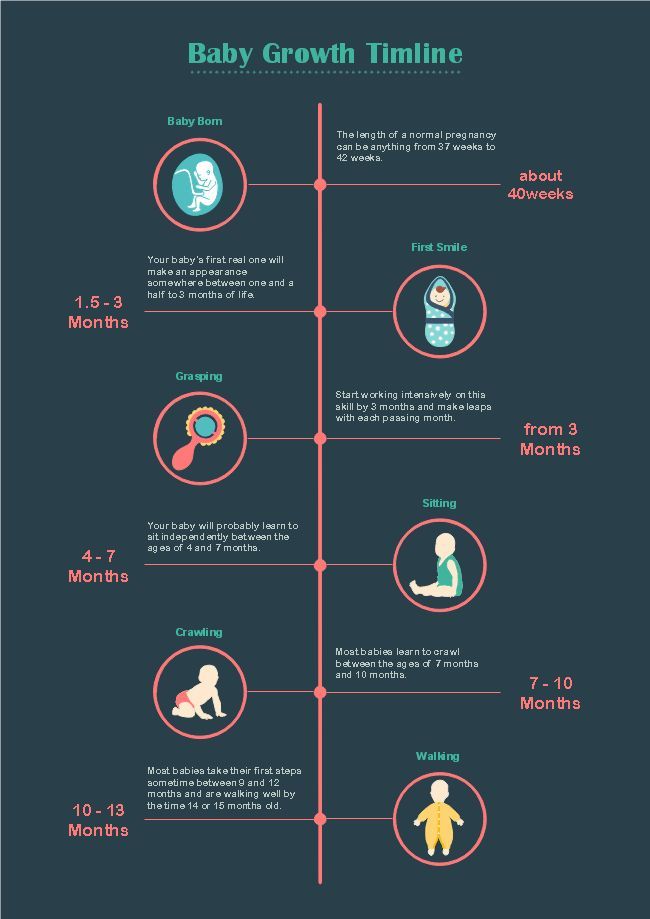 Features of development and the emergence of new actions. What you need to know about nutrition, daily care. Planned visits to doctors and testing.
Features of development and the emergence of new actions. What you need to know about nutrition, daily care. Planned visits to doctors and testing.
Read more
2 months
What happens in the life of a child at the age of 2 months? What behaviors should be taken into account? The appearance of the first emotions of the baby, the development of the vocal apparatus.
Read more
3 months
What discoveries do parents expect when their child is 3 months old? The emergence of new skills, the first conscious manifestation of emotions and desires. What you need to know about the features of feeding?
Read more
4 months
What happens to a 4 month old baby? The first serious games and interaction with the outside world. What you need to know about the features of feeding, and what recommendations for care should be followed?
What you need to know about the features of feeding, and what recommendations for care should be followed?
Read more
5 months
Transition period from horizontal position. What you need to know about the features of feeding crumbs? What should parents of a five-month-old baby be prepared for?
Read more
6 months
What did the baby learn at 6 months of age? How critical is the discrepancy with accepted norms? What you need to know about the features of feeding crumbs, how to introduce the first complementary foods?
Read more
7-9 months
What happens to a 7-9 month old baby? The baby begins to sit, crawl or even take the first steps.